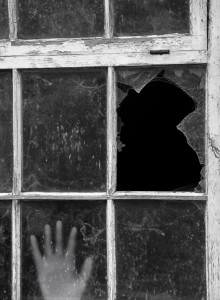Relationship Differences: Fusion and De/fusion (Part 12)
By Asher Crispe: January 10, 2013: Category Inspirations, Quilt of Translations
 While intuition and understanding are the intellectual parentage of our personality (‘these thoughts helped to make me who I am today’), their emotional progeny prove even more instrumental in the formative stages which fill out our embodied self. In Kabbalah, the emotions are comparable to spatial extensions from the core of our consciousness. The directionality of our psychic tendencies (feeling ‘up,’ feeing ‘down’) produces a proliferating cluster of character traits (middot) with which we wrap and layer ourselves. In this way, emotive experience dominates the world of Formation with each feeling reshaping my general ‘disposition.’ Given this we can now ascertain the type of intensified separation or distinction that befalls us in this lower-level frame. In the parlance of everyday social-drama, we seek to heal the broken hearted. When I feel the heat of conflict with the other, I am liable to go to pieces emotionally. It breaks me.
While intuition and understanding are the intellectual parentage of our personality (‘these thoughts helped to make me who I am today’), their emotional progeny prove even more instrumental in the formative stages which fill out our embodied self. In Kabbalah, the emotions are comparable to spatial extensions from the core of our consciousness. The directionality of our psychic tendencies (feeling ‘up,’ feeing ‘down’) produces a proliferating cluster of character traits (middot) with which we wrap and layer ourselves. In this way, emotive experience dominates the world of Formation with each feeling reshaping my general ‘disposition.’ Given this we can now ascertain the type of intensified separation or distinction that befalls us in this lower-level frame. In the parlance of everyday social-drama, we seek to heal the broken hearted. When I feel the heat of conflict with the other, I am liable to go to pieces emotionally. It breaks me.
Jewish esotericism refers to this breakage as shevirat ha’kelim or the ‘breaking of the vessels.’ The light of the mind gets deposited in different containers which color it and bring out its sensuousness. Each container is an emotive state, a mental mode that becomes mood. Holding all of my emotions together would resemble stable containment and peaceful coexistence within my diverse spectrum of feelings. The problem arises when my emotions become overly energized or provoked into eruption–the hypertrophy of part of my embodied self. Since we are not dealing with physical containers per se, we can liken the shattering of our emotional serenity to the wiping up of a vortex of mixed and conflicting emotions that overloads the overall containment field of the heart. Conflict, while more readily mediated in the mind (‘let’s be rational about our differences’), is much more challenging to manage in the heart (the irrational beckoning a disproportionate ‘ir/rational’ response).
Each emotive state or character trait is likened in Jewish mysticism to an Edomite king (there are eight in all). About each of these kings (with the exception of the eighth which we will have to leave for another time) the Torah relates (Genesis 36:31-39) that ‘he ruled’ and then ‘he died.’ Emotions are prone to competition: my emotions can attempt to conquer your emotions and get them to follow my emotional lead (‘I’m feeing happy or I’m feeling miserable so you should too’) or I may be fighting an internal battle with two or more conflicting emotions doing battle within myself, laying waste to my psyche in the process. These Edomite kings represent the world of chaos (tohu) which relates to the deep seated abyss of my unconscious self as expressed (albeit in veiled form) by the phrase in Genesis 1:2 “…darkness on the face of the abyss (tohom).” Interestingly, the first appearance of tohu or ‘chaos’ is also in this same verse. This is in part to call attention to how tohu [תהו] ‘chaos’ is constituted in the tohom [תהום] or ‘abyss,’ in the abysmal which declares that ‘I’m going to continue to fall and things will keep getting worse without foreseeable end.’
Each emotion vies for dominance. Each one wants to be ‘king’ and not just any king–a king in the land of Edom. ‘Edom’ [אדום] has a number of branches of significance: first, it can mean ‘red’ which symbolizes gevurot or ‘severities’ in Kabbalah (the welling up of emotion reddens the face); secondly, Edom relates etymologically to the word ‘Adam’ [אדם] thereby implying that at least one definition of our humanity comes from our human emotions and not just our intellect (that which might distinguish us from machine intelligence or robots according to some authorities); and thirdly, Edom relates to the word damut [דמות] or ‘resemblance’ (we don’t relate to each other’s states of consciousness directly but only by means of their emotional projection and resemblance). The play of resemblances within our self-generated nebula of felt sensations affects the slippage of boundaries between one emotion and another. Taking advantage of this mobility, one emotion may attempt to steal territory from another. Revved up into overdrive amidst the adrenaline of war, emotions may aim to saturate the whole of the person–a compete takeover without any willingness to accommodate another oppositional emotion.
The energy running through our circuits proves too much when an emotion becomes ‘abysmal’ (this would be like someone who has become a bottomless pit of neediness–no matter how much we feed this emotional state, ‘it’ still desires more). When our ‘surge protectors’ fail and we hit critical overload, the coherence of all the boundary conditions that stabilize our iridescent emotional states shatter. This progression goes from unchecked chaos (these are called ‘primordial kings’ in Kabbalah because they are really pre-rational and anarchical within the soul) and plunges into the abyss (tohom [תהום]) which is itself a permutation of the word hamavet [המות] which means ‘death.’ The abysmal or ‘bottomless’ (which is somewhat equivalent to ‘baseless’ emotion, that which lacks a foundation) sows the seeds of its own undoing. This ‘death-drive’ or self-destructive impulse that is latent within fascistic feelings is exemplified in the Torah narrative with the kings who either rule (only one feeling can capture center stage and consume my complete attention at a time) or else he ‘dies.’
So often, when we say ‘the feeling is gone’ we really mean that it has died. While we may be able to revivify it through reflection, the breakdown trauma really results from the sudden unexpected emotional loss (I didn’t lose you but my emotions that I experienced in conjunction with you). Something which I felt so intensely, which dominated my consciousness to the detriment of my emotional balance, lived its life in the fast lane. Thrilling as it is to let my passions run their course in an untempered and unbridled fashion, nothing prepares me for the sudden loss of sensation. The legacy of previous generations of emotion cannot compensate for the vacancy I’m experiencing in the present.
Chaotic emotive monarchies are set against the background of the chalal or ‘void’ in kabbalistic cosmology. They represent an immature and ill conceived attempt to fill this existential void and distract ourselves from the emptiness that we experience as a result of the seeming withdrawal of Divinity which gave rise to Creation in the first place (a loss of ultimate ground and the meaning of Being). But how can one fill an infinite void other than with the Infinite Himself? We keep pouring and pouring only to start panicking when we sense that nothing is really getting filled. I just become more drained and depleted in the process.
The shattering of the vessels therefore describes a situation of emotional fragmentation and disintegration. ‘Shevira’ or ‘breaking,’ by virtue of the force involved, creates greater separation and distance between the fragments and as such registers one notch below the havdalah and hafrada ‘separations’ in the worlds of Emanation and Creation. Emotional distance and differences seem more dramatic than intellectual ones. I can easily get along and have a fruitful partnership with someone who holds divergent opinions or thinks differently than me as long as I don’t care that much about the issue. ‘Not caring’ here means that I can bracket my emotions; it’s opposite is when I have a biting feeling from what I’m thinking which I cannot ignore or suppress). This is why the world of Formation, with all of its shape shifting tendencies, corresponds to our opposition and conflict based relationship (k’negdo). Each partner in the relationship views the other with suspicion. Who will win today? Who will get the upper hand? Subjected to intensive feelings that demand tribute adds lighter fluid to the best of circumstances.
 Whether the opposition is interpersonal or intrapersonal in its source, we can either let it get the best of us and sap our energy (it can even ‘kill’ the moment and threaten the relationship overall) or we can greet this opposition as the pumice of our self-refinement. As long as we are still getting ourselves into shape (the formative quality of the world of Formation) I can at least accept some degree of opposition to my feelings and let the others commence with the trimming, sanding and polishing of the rough patches of my personality. Once things break, it is much easier to put everything back together when all of the pieces are retrofitted with ‘universal adapters.’ Even within myself, when the warring factions of my positive and negative inclination are posed on the brink of pulling me apart, I can mentally self-inject elastin into my body of emotions to salvage the otherwise brittle shapes that have been stressed and sketched, convulsed and contracted past their safety limits.
Whether the opposition is interpersonal or intrapersonal in its source, we can either let it get the best of us and sap our energy (it can even ‘kill’ the moment and threaten the relationship overall) or we can greet this opposition as the pumice of our self-refinement. As long as we are still getting ourselves into shape (the formative quality of the world of Formation) I can at least accept some degree of opposition to my feelings and let the others commence with the trimming, sanding and polishing of the rough patches of my personality. Once things break, it is much easier to put everything back together when all of the pieces are retrofitted with ‘universal adapters.’ Even within myself, when the warring factions of my positive and negative inclination are posed on the brink of pulling me apart, I can mentally self-inject elastin into my body of emotions to salvage the otherwise brittle shapes that have been stressed and sketched, convulsed and contracted past their safety limits.
Up next in Part Thirteen we will address the dangers of social isolation and the feelings of being cut off from other people.
http://www.interinclusion.org/inspirations/relationship-differences-fusion-and-defusion-part-13/
Relationship Differences: Fusion and De/fusion (Part 12),
















;)
;)
;)
;)
;)
;)
;)
;)
;)
;)
